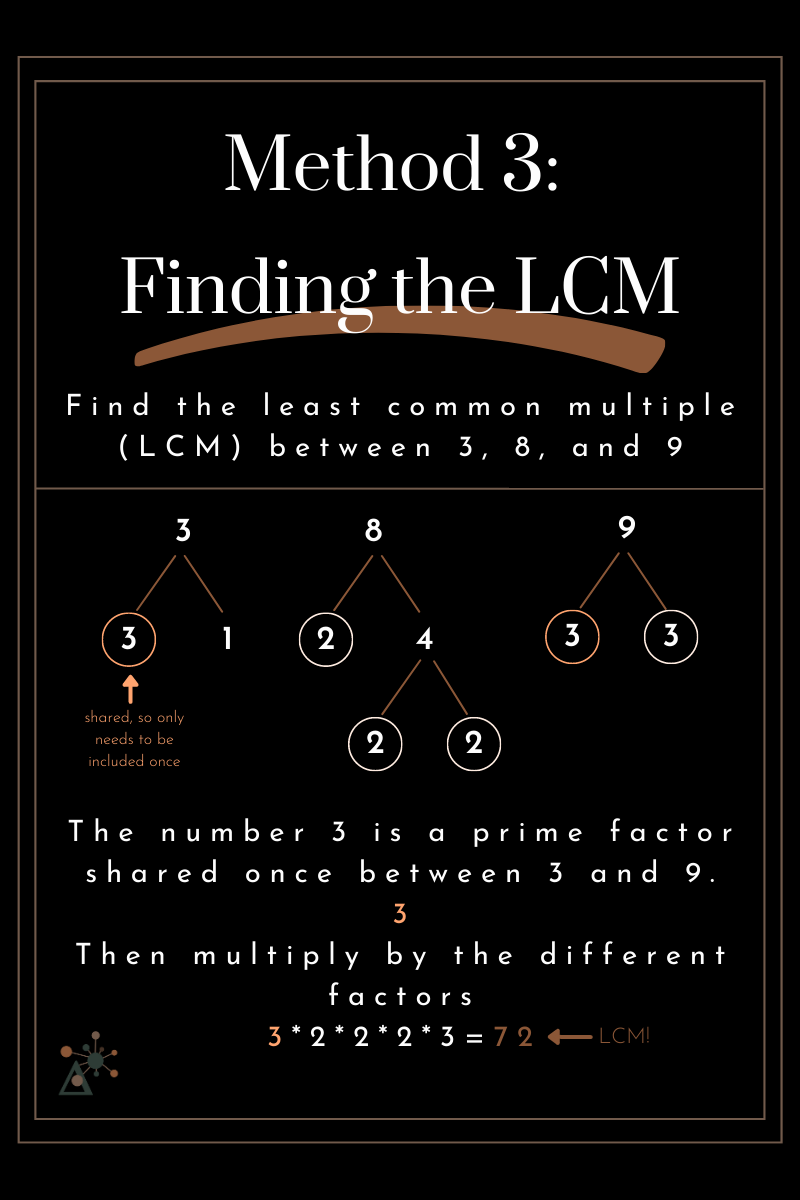Multiples and Least Common Multiples
Welcome back to our Number Properties series! If you're just joining us, make sure to check out our first post on Factors and Prime Factors. Understanding number properties is important for math and can help you with many other math concepts and classes. Factors and multiples are like two sides of a coin - understanding one can help you understand the other.
If you are feeling comfortable with multiples and least common multiples and ready to jump to the next topic in our series, here are the topics we'll cover next:
Multiples
To begin understanding multiples, let's first define what a multiple is. A multiple is a number that you get when you multiply a given number by another whole number.
For example, if you have the number 3 and multiply it by 2, the multiple is 6 because 3 times 2 equals 6. A multiple is the result you get when you do multiplication.
To find the multiples of a number, you can skip count by that number or do some multiplication. For example, if you want to find the multiples of 3, you can skip count or multiply by 3: 3, 6, 9, 12, 15, 18, 21, 24, and so on. It's important to remember that the original number is also a multiple of itself because it can be multiplied by 1.
Least Common Multiples (LCM)
Now let's see how we can find the Least Common Multiples (LCM). The LCM is the smallest multiple that two or more numbers have in common. Finding the LCM can be helpful in different situations (like fraction operations). Here are three methods to find the LCM:
Method 1
Write out the multiples of the numbers you're interested in and find the lowest common multiple they share. This method can be lengthy for larger numbers or when the numbers have few similarities.
Let’s take a look at an example below. Using the first method, let’s find the least common multiple between 3 and 8.
Method 2
Find the multiples of the higher number first. This can save time because you only need to focus on a smaller set of multiples. Once you have the list of multiples for the larger number, check which ones are also multiples of the lower number.
Let’s now use this method to find the least common multiple between 3 and 8 again.
Take a look at the image on the left to see how to use this method.
Method 3
Use prime factors to find the LCM. First, break each number down into its prime factors. Then, look for any common prime factors and then multiply them by the unique (or different) prime factors. This method can be more direct than listing multiples. It also works well for finding the LCM between more than two numbers.
Let’s take a look one more time at the same example and see how we can use this method to find the least common multiples between 3 and 8.
Since these numbers do not share any factors, we multiply all their prime factors to get the least common multiple.
As we said earlier, this method works well when finding the common multiples between more than two numbers. Let’s add to our example and find the LCM between 3, 8, and 9.
Since we have a shared factor, we only need to multiply the
shared factor once.
Conclusion
Knowing multiples and the LCM is essential for various reasons, including finding the multiples of everyday items, adding or subtracting fractions, and comparing numbers.
So, keep learning about multiples and LCM, and you'll see how useful they can be in math!





